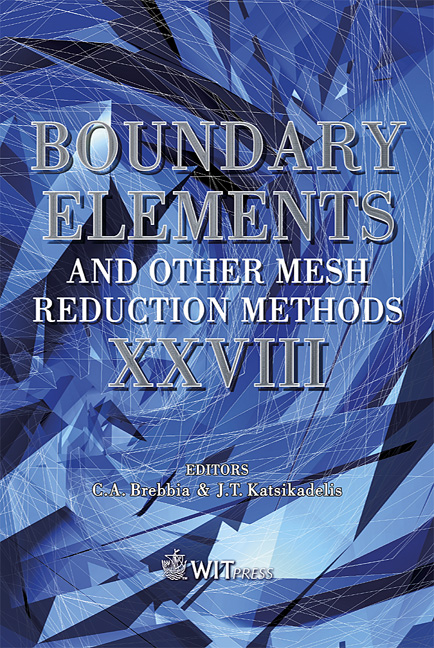Boundary Element Analysis Of Strain Fields In InAs/GaAs Quantum Wire Structures
Price
Free (open access)
Transaction
Volume
42
Pages
10
Published
2006
Size
1,859 kb
Paper DOI
10.2495/BEM060131
Copyright
WIT Press
Author(s)
F. Han, E. Pan & J. D. Albrecht
Abstract
This paper studies the elastic fields in InAs/GaAs quantum wire (QWR) structures arising from the mismatch lattice between InAs and GaAs. The present treatment is different from recent analyses based on the Eshelby inclusion approach where the QWR material, for simplicity, is assumed to be the same as the matrix/substrate. Here, a more complete treatment is developed taking into account the structural inhomogeneity using the boundary integral equation method. We implement our model using discrete boundary elements at the interface between the QWR and its surrounding matrix. The coefficients of the algebraic equations are derived exactly for constant elements using our recent Green’s function solutions in the Stroh formalism. For both (001) and (111) growth directions, our results show that while the elastic fields far from the QWR are approximated well by the homogeneous inclusion approach, for points within or close to the QWR, the differences between the fields computed with the simplified inclusion and complete inhomogeneity models can be as large as 10% for the test system. These differences in the strain fields will have strong implications for the modeling of the quantized energy states of the quantum wire nanostructures. Since the strain fields inside and close to the wire are more important than the exterior strain fields from the standpoint of the confined electronic states, we suggest that in the vicinity of the QWR, the inhomogeneity model be used with proper elastic constants, whilst the simple exact inclusion model be used in the bulk of surrounding medium. Keywords: inclusion, inhomogeneity, exact closed-form solution, full/half plane Green’s function, boundary integral equation.
Keywords
inclusion, inhomogeneity, exact closed-form solution, full/half plane Green’s function, boundary integral equation.





